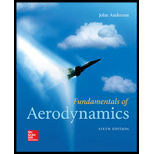
Fundamentals of Aerodynamics
6th Edition
ISBN: 9781259129919
Author: John D. Anderson Jr.
Publisher: McGraw-Hill Education
expand_more
expand_more
format_list_bulleted
Concept explainers
Textbook Question
Chapter 3, Problem 3.8P
Consider a uniform flow with velocity
Expert Solution & Answer
Want to see the full answer?
Check out a sample textbook solution
Students have asked these similar questions
The velocity components of an incompressible, two-dimensional field are given bythe following equations:
u(x,y) =y^2 -x (1+x)
v(x,y) = y(2x+1)
Show that the flow field is (a) irrotational and (b) satisfies conservation of mass.
1. The components of velocity in a flow field are given byu=x2+y2+z2v=xy+yz+z2w=-3xz- 0.5z2+4a) Determine the volumetric dilatation rate and interpret the result.b) Determine an expression for the rotation vector. Is this an irrotational flow field?
The velocity components in a two-dimensional flow are
u = y^3 /3 + 2x-x²y and
v= xy²-2y-x^3 /3.
Show that it is an irrotational flow.
Chapter 3 Solutions
Fundamentals of Aerodynamics
Ch. 3 - For an irrotational flow. show that Bernoullis...Ch. 3 - Consider a venturi with a throat-to-inlet area...Ch. 3 - Consider a venturi with a small hole drilled in...Ch. 3 - Consider a low-speed open-circuit subsonic wind...Ch. 3 - Assume that a Pitot tube is inserted into the...Ch. 3 - A Pilot tube on an airplane flying at standard sea...Ch. 3 - At a given point on the surface of the wing of the...Ch. 3 - Consider a uniform flow with velocity V. Show that...Ch. 3 - Show that a source flow is a physically possible...Ch. 3 - Prove that the velocity potential and the stream...
Ch. 3 - Prove that the velocity potential and the stream...Ch. 3 - Consider the flow over a semi-infinite body as...Ch. 3 - Derive Equation (3.81). Hint: Make use of the...Ch. 3 - Derive the velocity potential for a doublet; that...Ch. 3 - Consider the nonlifting flow over a circular...Ch. 3 - Consider the nonlifting flow over a circular...Ch. 3 - Consider the lifting flow over a circular cylinder...Ch. 3 - The lift on a spinning circular cylinder in a...Ch. 3 - A typical World War I biplane fighter (such as the...Ch. 3 - The Kutta-Joukowski theorem, Equation (3.140), was...Ch. 3 - Consider the streamlines over a circular cylinder...Ch. 3 - Consider the flow field over a circular cylinder...Ch. 3 - Prove that the flow field specified in Example 2.1...
Knowledge Booster
Learn more about
Need a deep-dive on the concept behind this application? Look no further. Learn more about this topic, mechanical-engineering and related others by exploring similar questions and additional content below.Similar questions
- Find the stagnation point in the following two-dimensional velocity field: V=(3+x-y)i + (5+x+y)jarrow_forwardConsider the velocity field given by u = y/(x2 + y2) and v = −x/(x2 + y2). Calculate the vorticity.arrow_forwardConsider the flow of a fluid at speed v0, through a cylindrical pipe of radius r. What would be the speedof this fluid at a point where, because of a constriction in the pipe, the fluid is confined to a cylindricalopening of radius r/4?arrow_forward
- The expression for stream function is described by y = x ^ 3 - 3x * y ^ 2 . Indicate whether the flow is rotational or irrotational. Determine the value or velocity potential o, if it exists.arrow_forwardThe velocity vector in a flow is given by :V=-3xi-4yj-7zk Determine the stream equation passing through a point L(4,2,3)arrow_forwardThe entrance flow between two parallel plates (gap h) has a velocity that varies linearly at the entrance and develops into a fully parabolic profile at the exit. What is the relationship between the maximum velocity at the entrance and that at the exit? You can show by symmetry that the maximum velocity is attained at the mid-plane between the two plates.arrow_forward
- θ(x,y)=x2-y2+2xy According to the potential equation of a two-dimensional flow in the horizontal plane defined as;1-) Is this current physically possible?2-) Determine the current function?3 -) Calculate the resultant velocity and resultant acceleration at the point (5,6).4 -) Calculate the flow rate passing between (2,2) and (3,3) streamlines.arrow_forwardThe velocity field for an incompressible flow is given by V = 5x ^ 2i- 20 xyj + 100tk. Explain whether this flow is steady or not. Is the flow two or three dimensional? Determine the magnitude and direction of the velocity and acceleration of a flow particle at t = 0.2 and position (1, 2, 3).arrow_forwardQ1:- (a) Show that stream function exists as a consequence ofequation of continuity.(b) Show that potential function exists as a consequence ofirrotational flowarrow_forward
- Consider the Eulerian velocity u=(4y−16x)i+(16y−60x)j, where (x,y)are Cartesian coordinates. Determine the stream functionarrow_forwardA 50. 95mm diameter horizontal jet of water strikes a plate. .Determine the velocity of the jet if 50N of horizontal force is required to move the plate at 2.95m/s at the same direction as that of jet. Choices: 7.90 9.70 79.0 0.97 Note: please help me in this sample problem and please base your answer on the choices given thanks for the helparrow_forwardCan the flow be categorised as scalar potential? Find the scalar potential.arrow_forward
arrow_back_ios
SEE MORE QUESTIONS
arrow_forward_ios
Recommended textbooks for you
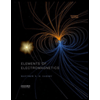 Elements Of ElectromagneticsMechanical EngineeringISBN:9780190698614Author:Sadiku, Matthew N. O.Publisher:Oxford University Press
Elements Of ElectromagneticsMechanical EngineeringISBN:9780190698614Author:Sadiku, Matthew N. O.Publisher:Oxford University Press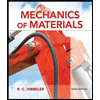 Mechanics of Materials (10th Edition)Mechanical EngineeringISBN:9780134319650Author:Russell C. HibbelerPublisher:PEARSON
Mechanics of Materials (10th Edition)Mechanical EngineeringISBN:9780134319650Author:Russell C. HibbelerPublisher:PEARSON Thermodynamics: An Engineering ApproachMechanical EngineeringISBN:9781259822674Author:Yunus A. Cengel Dr., Michael A. BolesPublisher:McGraw-Hill Education
Thermodynamics: An Engineering ApproachMechanical EngineeringISBN:9781259822674Author:Yunus A. Cengel Dr., Michael A. BolesPublisher:McGraw-Hill Education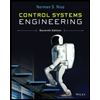 Control Systems EngineeringMechanical EngineeringISBN:9781118170519Author:Norman S. NisePublisher:WILEY
Control Systems EngineeringMechanical EngineeringISBN:9781118170519Author:Norman S. NisePublisher:WILEY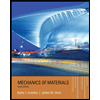 Mechanics of Materials (MindTap Course List)Mechanical EngineeringISBN:9781337093347Author:Barry J. Goodno, James M. GerePublisher:Cengage Learning
Mechanics of Materials (MindTap Course List)Mechanical EngineeringISBN:9781337093347Author:Barry J. Goodno, James M. GerePublisher:Cengage Learning Engineering Mechanics: StaticsMechanical EngineeringISBN:9781118807330Author:James L. Meriam, L. G. Kraige, J. N. BoltonPublisher:WILEY
Engineering Mechanics: StaticsMechanical EngineeringISBN:9781118807330Author:James L. Meriam, L. G. Kraige, J. N. BoltonPublisher:WILEY

Elements Of Electromagnetics
Mechanical Engineering
ISBN:9780190698614
Author:Sadiku, Matthew N. O.
Publisher:Oxford University Press

Mechanics of Materials (10th Edition)
Mechanical Engineering
ISBN:9780134319650
Author:Russell C. Hibbeler
Publisher:PEARSON

Thermodynamics: An Engineering Approach
Mechanical Engineering
ISBN:9781259822674
Author:Yunus A. Cengel Dr., Michael A. Boles
Publisher:McGraw-Hill Education

Control Systems Engineering
Mechanical Engineering
ISBN:9781118170519
Author:Norman S. Nise
Publisher:WILEY

Mechanics of Materials (MindTap Course List)
Mechanical Engineering
ISBN:9781337093347
Author:Barry J. Goodno, James M. Gere
Publisher:Cengage Learning

Engineering Mechanics: Statics
Mechanical Engineering
ISBN:9781118807330
Author:James L. Meriam, L. G. Kraige, J. N. Bolton
Publisher:WILEY
Introduction to Kinematics; Author: LearnChemE;https://www.youtube.com/watch?v=bV0XPz-mg2s;License: Standard youtube license